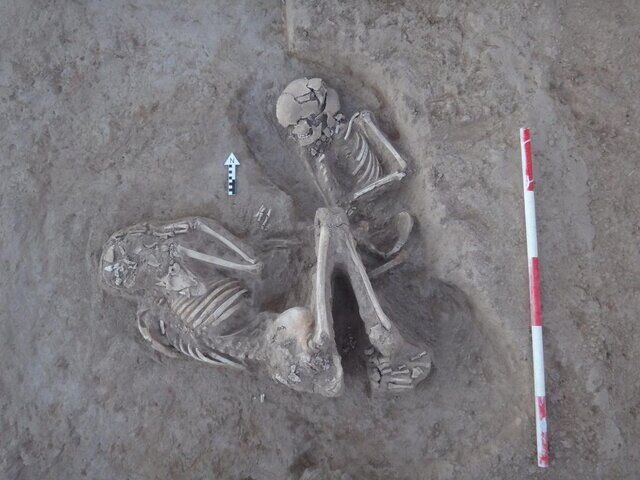Fort remnants associated with Median empire discovered in northeast Iran

TEHRAN – A team of Iranian and German archaeologists has recently unearthed vestiges of a prehistorical military fortress in northeast Iran.
Discovered in Tepe Rivi, an ancient hill in North Khorasan province, the fortress is estimated to date from some 2700 years ago when the mighty Median empire ruled parts of the greater Iran.
Furthermore, the team discovered other objects including a piece of engraved pottery that bears Sassanid Pahlavi script in the joint survey which marks the ninth archaeological season on the ancient site.
The discovery of the military fortress may indicate the existence of a regional government related to the northeast corner of the empire, a senior Iranian archaeologist Mohammad-Javad Jafari said.
"Discovered in the northern parts of the site and among the brick buildings left from this period [Median era], indicates the continuation of the political and economic importance of Tepe Rivi until the Sassanid period," Jafari added.
Over the past seasons, Tepe Rivi has so far revealed magnificent remains of the Bronze Age up to the Sassanid period.
Archaeological research works in Rivi started in 2012. Since then archaeologists accessed remains of settlements from the Bronze and Iron Age, the Achaemenid, the Parthian, the Sassanid dynasties, and the early Islamic period.
The previous rounds of research had been hired by various experts in archeology, geography, geophysics, geomorphology, and ecology who took part from the [Ludwig Maximilian] University of Munich; the [Free] University of Berlin; the University of Tehran; and Shahid Beheshti University.
Based on the studies, various architectural and archaeological evidence from the Parthian and the Sassanid era were discovered in the Rivi site, which is situated in Maneh-Samalqan county of modern North Khorasan.
The evidence, according to Jafari who headed the fifth season of archaeological excavation at the Rivi site, indicates the sequence of settlement in the area in the aftermath of the Achaemenid era, according to the Archaeology News Network.
In 2019, several historical clay stamps, estimated to date from the Achaemenid and Parthian eras, were discovered in the ancient site. “The seals were found alongside clay urns in a large hall and the seals are imprinted in a variety of geometric patterns [depicting] plants, animals, and human figures. Studying the findings can yield valuable information on the economy, culture, and arts of the ancient societies,” Jafari said.
“These stamps represent the widespread and complicated economic relations that people of the time had with other communities in such a way that made them bring together and store goods.” Evidence suggests that residents of this area sealed the urns that were loaded with particular goods then tied them with ropes, the archaeologist explained.
The Medes were an ancient Iranian people who spoke the Median language and who mostly inhabited an area known as Media between western and northern Iran. Around the 11th century BC, they occupied the mountainous region of northwestern Iran and the northeastern and eastern region of Mesopotamia located in the region of Hamadan (Ecbatana).
Their emergence in Iran is believed to have occurred during the 8th century BC. In the 7th century BC, all of western Iran and some other territories were under Median rule, but their precise geographic extent remains unknown.
Although Herodotus credits “Deioces son of Phraortes” (probably c. 715) with the creation of the Median kingdom and the founding of its capital city at Ecbatana (modern Hamadan), it was probably not before 625 BC that Cyaxares, grandson of Deioces, succeeded in uniting into a kingdom the many Iranian-speaking Median tribes, according to Britannica.
However, Ecbatana is deemed to be remaining a riddle, wrapped in a mystery, for decades or even centuries to come as the site of the ancient city lies partly within the modern city of Hamedan, which has never been excavated before.
AFM
Leave a Comment